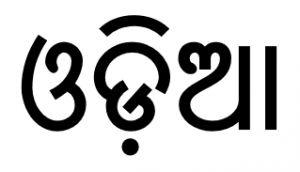Language/Odia/Grammar/Word-Formation
| ◀️ Basic Syllable Formation — Previous Lesson | Next Lesson — Greetings ▶️ |
Introduction
In the previous lesson, we learned the basics of forming Odia syllables. In this lesson, we will learn how to use these syllables to form simple words. We will also learn about some common rules for combining syllables to form words.
Word Formation
In Odia, words are formed by combining syllables. There are some basic rules for combining syllables to form words.
Rule 1: Combining Consonants and Vowels
To form a word, a consonant and a vowel syllable are often combined. For example:
| Odia | Pronunciation | English Translation |
|---|---|---|
| ଫ | pho | fruit |
| ଲା | laa | leaf |
| ସୁ | su | good |
As shown in the table, the consonant and vowel syllables are simply combined to form the word.
Note that when two or more consonants come together in a syllable, they are formed into a conjunct, which can represent a single sound. For example:
| Odia | Pronunciation | English Translation |
|---|---|---|
| ଶ୍ର | shra | to hear |
| ଗ୍ର | gra | village |
In these examples, the two consonants are combined to form a single sound.
Rule 2: Double Consonants
In Odia, double consonants are pronounced with a slight pause, with stress on the second consonant. For example:
| Odia | Pronunciation | English Translation |
|---|---|---|
| କ୍ଷ | ksho | to destroy |
| ଜ୍ଞ | jnyo | knowledge |
As shown in the table, the double consonants are pronounced with a pause, with stress on the second consonant.
Rule 3: Ending Consonants
In Odia, a word can end with a consonant or a vowel. However, some consonants cannot end a word. For example, the consonant ହ cannot end a word. If a word ends with a consonant that cannot end a word, then an extra vowel-sound is added to the end of the word. For example:
| Odia | Pronunciation | English Translation |
|---|---|---|
| ପଥ | patho | road |
| ଦେଶ | desha | country |
As shown in the table, the extra vowel-sound is added to the end of the word, so the consonant does not end the word.
Rule 4: Combining Words
It is also common in Odia to combine words to form new words. For example:
| Odia | Pronunciation | English Translation |
|---|---|---|
| ପାଣି | pani | water |
| ପ୍ରସାଦ | prasaad | food offered to God |
| ପାଣିପ୍ରସାଦ | paniprasaad | holy water and food offered to God |
In this example, the words ପାଣି and ପ୍ରସାଦ are combined to form the new word ପାଣିପ୍ରସାଦ, which means holy water and food offered to God.
Rule 5: Sandhi
Sandhi is a phonological process that takes place when certain word endings and beginnings come together. This process can change the pronunciation of words. For example:
| Odia | Pronunciation | English Translation |
|---|---|---|
| ମା | ma | don't |
| ଆସିବ | aasibo | will come |
| ମା ଆସିବ | maa aasibo | won't come |
As shown in the table, when the word ମା combines with the word ଆସିବ, the pronunciation of ମା changes to maa. This is an example of sandhi.
Conclusion
In this lesson, we learned how to form simple words in Odia using syllables. We also learned about some common rules for combining syllables to form words. In the next lesson, we will continue to build our vocabulary by learning common greetings and phrases in Odia.
Other Lessons
- Present Tense
- Plurals
- Consonants
- Adjectives
- Negation
- Questions
- Subject Verb Object
- Conditional Mood
- Vowels
- Basic Prepositions
Sources
| ◀️ Basic Syllable Formation — Previous Lesson | Next Lesson — Greetings ▶️ |

